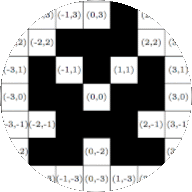Section 0.2 Definitions, Theorems, and Conjectures
If we think of math like a building, then definitions are the foundation, theorems are the bricks, and logic is the mortar that holds everything together.
Definitions: Definitions explain new terms we use in math. They help us describe objects and their properties clearly.
Theorems: Theorems are statements about the things defined in math. A theorem is proven by following a sequence of logical steps. These steps use definitions and previously proven theorems to show that the statement is true. The proof is the series of steps that prove the theorem.
Proving Theorems: In this course, we don’t expect you to create new theorems or prove known theorems from scratch. However, we will prove most theorems here to show you how everything follows logically from the definitions. Proofs usually come right after the theorem (starting with the word Proof.) or the reasoning might be given before the statement.
Conjectures: Sometimes, there are statements in math that people believe to be true, but no one has been able to prove them yet. These are called conjectures.

A door seen from a hallway, with "Teachers’ Lounge" on the glass. Inside, two teachers are talking. Teacher 1: My students drew me into another political argument. Teacher 2: Eh; it happens. Teacher 1: Lately, political debates bother me. They just show how good smart people are at rationalizing.
The two teachers continue talking. A third one is seen reading a book on a sofa. Teacher 1: The world is so complicated - the more I learn, the less clear anything gets. There are too many ideas and arguments to pick and choose from. How can I trust myself to know the truth about anything? And if everything I know is so shaky, what on Earth am I doing teaching?
Teacher 2: I guess you just do your best. No one can impart perfect universal truths to their students. Teacher 3: ’ahem’ Teacher 2: ...Except math teachers. Teacher 3: Thank you.
\(\mathsf{a\cdot(b+c)=(a\cdot b)+(a\cdot c)}\text{.}\) Politicize that, ...
\(\mathsf{a\cdot(b+c)=(a\cdot b)+(a\cdot c)}\text{.}\) Politicize that, ...
https://xkcd.com/263).We would also remark that all the definitions presented here are man-made and, to some extent, arbitrary. We use these particular definitions because they work and help us solve problems that we can formulate in the language of mathematics. It remains a constraint, of course, that the definitions have to work together so that we obtain a structurally-sound mathematics building. The logical consistency and the precise nature of the definitions we choose to use and the theorems that we can prove starting with them give us the certainty that is unique to the discipline of mathematics as referred to in Figure 0.2.2.

